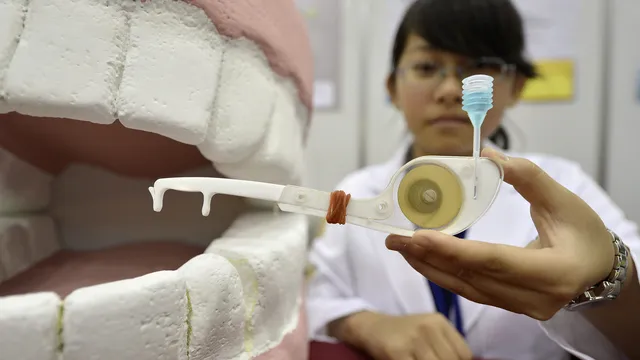Publishing their findings in Nature Biomedical Engineering, a research team tested a toothpick coated with a vaccine on animals, introducing the vaccine through the gums and other tissues in the mouth.
The results of the study showed that this helped produce antibodies in the mucous membranes of the lungs and nose.
"[This] would be easy to administer and addresses many people's concerns about vaccination with needles," said Harvinder Singh Gill, author of the study article, in a press release.
"We believe this technique should be comparable in cost to other vaccine delivery techniques," he added.
For this study, the researchers knew they needed to focus on the connective epithelium.
These are the tissues that line our organs and other parts of the body, such as the stomach, lungs, and intestines.
Most of these epithelia are designed to prevent foreign invaders, such as viruses, bacteria, and even dirt, from entering the bloodstream. However, this is not the case for the connective epithelium.
The deep tissues between the teeth and gums do not have the same protection as other epithelia.
Therefore, connective epithelium can release immune cells that fight bacteria.
"Because connective epithelial tissue is more permeable than other epithelial tissues and forms a mucous membrane, it offers a unique opportunity to introduce vaccines into the body in a way that stimulates antibody production in the body's mucous membranes," Gil said.
In the laboratory, the researchers added a flu peptide vaccine to a non-woven dental floss and used it to clean the teeth of mice. They compared antibody production in mice that received the vaccine via nasal spray and under-the-tongue drops.
"We found that delivering the vaccine through the connective epithelium elicited a much better antibody response in the mucosa than the current gold standard for oral vaccination, where the vaccine is placed under the tongue,"
explained Rohan Ingrol, first author of the paper and a doctoral student of Gill at Texas Tech University, in a press release.
"The toothpick technique also provides comparable protection against the flu virus compared to the vaccine administered through the nasal epithelium," he added.
Administering the vaccine in this way could be revolutionary and potentially improve vaccine safety.
"This is extremely promising because most vaccines cannot be administered through the nasal epithelium—the barrier properties of this mucosal surface prevent effective vaccine uptake," Gil emphasized.
"Intranasal administration can also lead to the vaccine reaching the brain, which could raise safety concerns. However, vaccination through the connective epithelium does not carry this risk," the researcher added.
Although the new method proved effective, the research team knew it was impractical to ask patients to hold a string covered with vaccine.
Instead, the team switched to small applicators with short prongs, between which a short string was tied.
To test the effectiveness of the thread, the team added a fluorescent dye to it and asked 27 study participants to apply the vaccine to the connective epithelium between their gums.
"We found that approximately 60% of the dye was deposited in the gingival pocket, suggesting that dental floss may be a practical method for delivering the vaccine to the connective epithelium," Ingrol said.
Gil and the research team believe these results could soon lead to the method moving into clinical trials, although many questions remain unanswered.
Overall, however, the team believes this could be an improved method for administering vaccines.
"In addition, we need to know more about how or whether this approach would work in people with gum disease or other infections in the oral cavity," Gil said.
There is still much to learn about this method, but it could change the way we look at vaccines and toothpicks. | BGNES

 Breaking news
Breaking news
 Europe
Europe
 Bulgaria
Bulgaria







